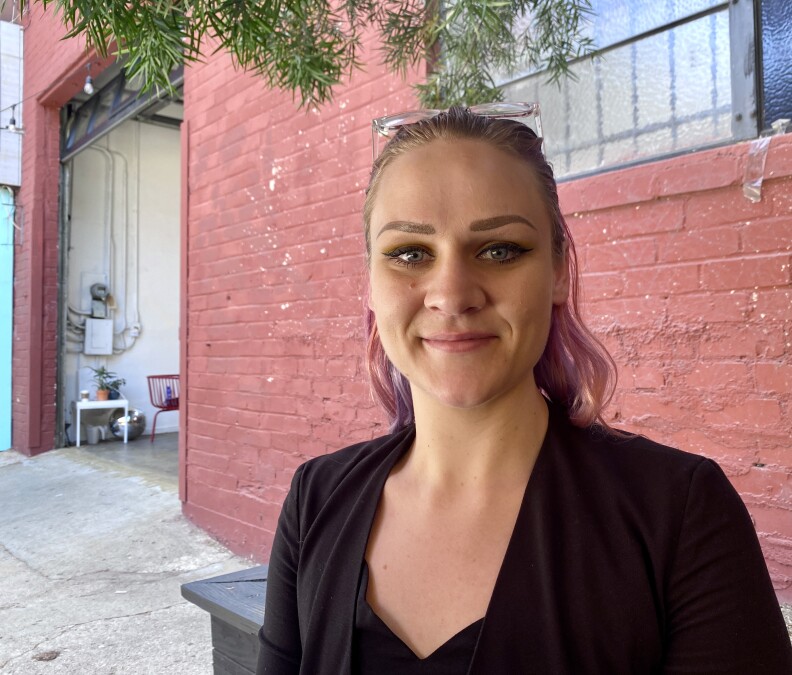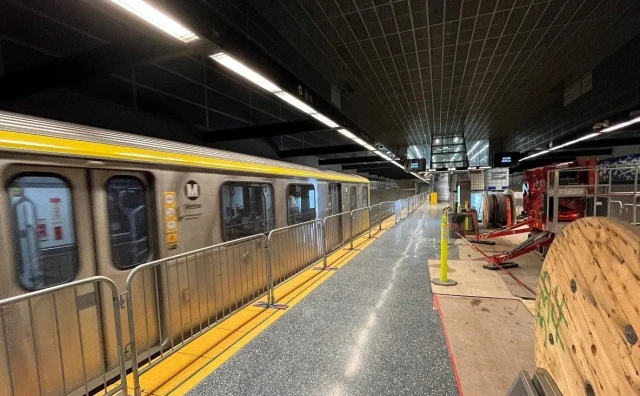With our free press under threat and federal funding for public media gone, your support matters more than ever. Help keep the LAist newsroom strong, become a monthly member or increase your support today during our fall member drive.
Foster Kids Struggle While The City Plans To Amend Anti-Camping Laws

Kids who end up in foster care often end up falling into homelessness, adding to the growing numbers of visibly unhoused people council members are desperate to clear from the streets.
The city is considering banning unhoused encampments near schools, with officials claiming they need to protect children. But many of those young people will likely bear the brunt of the law, especially foster youth.
Nathan House was 11 years old when his mother passed, leaving his brother, who was just 10 years his senior, to care for him. By age 13, House was in foster care. He ended up with two different foster families within the first six months before he was moved to a group home in the San Fernando Valley.
“That's when you know you're about to grow up,” House said. "You know, I want to say every kid there that's under the age of 18, they're already grown basically in my head, like, not grown like you can drink, but your mind matures ahead of your body.”
House, who never had any run-ins with the criminal justice system, said he found himself living in a house with youth who did, some even former gang members. When he was 15, he got into a fight with another youth living there who was almost 18. He was charged with battery, did three months in juvenile hall, and was put on probation. After that experience, House said he regularly started going AWOL (absent without official leave) from the group home, saying he felt safer sleeping on the streets.
House’s experience is likely not an anomaly. There are nearly 2,000 youth who are currently in “supportive transition” with L.A. County’s Department of Children and Family Services. According to the Los Angeles Homeless Services Authority’s 2020 unhoused count, there were 2,585 transitioned-aged youth (aged 18-24) who were unsheltered. In 2022, L.A. County’s Office of Education revealed there are roughly 51,000 young people who are unhoused. Its definition includes students who couch surf, live in substandard housing conditions like garages, or share an apartment with several other families due to the cost of rent. There are over 269,000 children in grades K-12 experiencing homelessness across California.
Amending The Laws
L.A. City council members, with the exception of Raman and Bonin, recently considered amending the city’s 41.18 anti-camping laws to include banning unhoused people within 500 feet of schools or daycares. L.A. Unified Superintendent Alberto Carvalho told council members that students are seeing and hearing things no parent would find acceptable for kids and they have a “moral,” “professional,” and “personal” responsibility to “protect our children.”
These numbers underscore the importance of examining who council members are trying to protect (there is a pipeline of children who will likely be subject to these anti-camping laws in the near future) and of investing more resources into foster youth at risk of falling into homelessness.
The Foster System’s Impact
House, now 25, was able to get assistance through a social worker and has his own apartment in Hollywood. But it was a long process to get there that started with being illegally evicted by his landlord from his first apartment placement when he was 19, leaving him unhoused for two years. Sarah Fay, a former foster youth who now works as a youth advocate at a nonprofit that helps unhoused young people, said the system’s impact on her life has been extremely prevalent.
“Trying to find some stability in my life has been one of the biggest challenges I’ve had, and continue to have, in my life,” said Fay.

Fay said she was in sixth grade riding in a car with her father when she saw her mom on a freeway offramp. She said they hadn’t seen her for years when they picked her up off the streets. That was her first encounter with homelessness.
Her childhood was filled with her mother and brother having run-ins with the criminal justice system. It’s how she eventually ended up in foster care, which she said she ended up exiting at the age of 16.
“I was placed back with my mom who got custody of me,” Fay said. “That made me lose out on certain resources that could have been available, like a transitional housing program.”
Fay said for over three years, she’s moved from motel to motel, using most of her income from her job to cover the nightly stays plus deposits. If she can’t afford to sleep at a motel, she sleeps in her car. She said she applied for housing because she knew she was turning 25 soon and would age out of the limited resources available, but by the time she was connected to services she no longer qualified. She said since then, she’s had to learn to advocate for herself to connect with resources, because foster youth lack the family structure and support that most kids have.
[Foster youth] get sucked into these avenues that put them in places where they end up in jail. They go straight to the streets when they get out because they don't have a home or a family. What do you expect these kids to do?
“Without that we don't have guidance. We have nobody there that can lead us in the right direction,” Fay said. “Even knowing how to deposit a check for some people — you just don't know. These are things they don't teach you in regular school. I was able to learn these things through my independent living program, provided through DCFS.”
Fay also expressed concern about 18 being considered a legal adult.
“If you’re younger than 18, as a provider I can’t help you because you're a minor, so I have to refer you straight to DCFS unless you're emancipated,” Fay said. “[Foster youth] get sucked into these avenues that put them in places where they end up in jail. They go straight to the streets when they get out because they don't have a home or a family. What do you expect these kids to do?”
Fay said there needs to be changes to the current systems in place so there is equitable access to housing and supportive services.
A spokesperson for DCFS said the agency has become more deliberate about ensuring young people have housing before they exit the system, and the way they provide services has become more coordinated between agencies than it was in the past. This includes a newly formed role that has someone on staff dedicated to helping youth find housing.
California lawmakers are considering creating a program to guarantee a basic income for students who’ve experienced homelessness — at least for the summer after they leave high school. The bill would give high school seniors who are unhoused a minimum of four monthly cash payments between April 2023 and August 2023.
At LAist, we believe in journalism without censorship and the right of a free press to speak truth to those in power. Our hard-hitting watchdog reporting on local government, climate, and the ongoing housing and homelessness crisis is trustworthy, independent and freely accessible to everyone thanks to the support of readers like you.
But the game has changed: Congress voted to eliminate funding for public media across the country. Here at LAist that means a loss of $1.7 million in our budget every year. We want to assure you that despite growing threats to free press and free speech, LAist will remain a voice you know and trust. Speaking frankly, the amount of reader support we receive will help determine how strong of a newsroom we are going forward to cover the important news in our community.
We’re asking you to stand up for independent reporting that will not be silenced. With more individuals like you supporting this public service, we can continue to provide essential coverage for Southern Californians that you can’t find anywhere else. Become a monthly member today to help sustain this mission.
Thank you for your generous support and belief in the value of independent news.

-
Kevin Lacy has an obsession with documenting California’s forgotten and decaying places.
-
Restaurants share resources in the food hall in West Adams as Los Angeles reckons with increasing restaurant closures.
-
It will be the second national day of protest against President Donald Trump.
-
The university says the compact, as the Trump administration called it, could undermine free inquiry and academic excellence.
-
This is the one time you can do this legally!
-
Metro officials said it will be able to announce an opening date “soon.”







